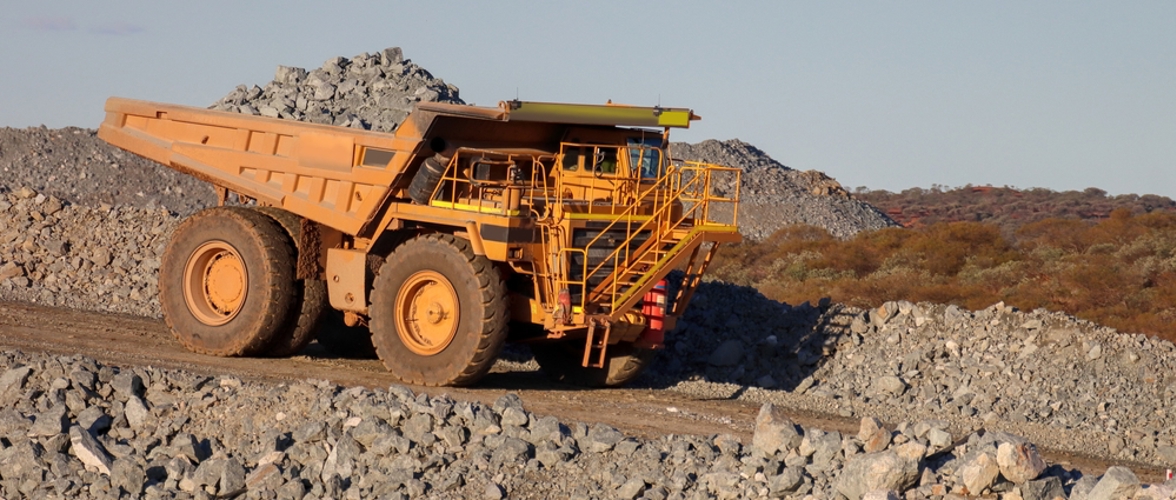Key Takeaways
- China's economic slowdown challenges Australia's iron ore exports. Diversification and technology can help stabilise the market.
- Despite a property market downturn, China's steel demand for infrastructure and electric vehicles (EVs) sustains Australian ore, echoing the need for savvy investment strategies.
- Governmental and market responses to China's policies will shape the future iron ore landscape, making adaptability key for industry stakeholders.
Ties between Australia and China's iron ore trade extend back centuries, fuelling the growth of a mutually beneficial trade relationship. Over the decades, this partnership has become central to Australia's economy, with China evolving into Australia's largest iron ore export destination, consistently driving the mining sector's boom.
However, the recent economic slowdown in China, exacerbated by trade tensions, which have escalated into tariff impositions and political disputes, poses potential risks for this key Australian industry. These tensions have led to dampening demand and increased pressure on iron ore prices. Financial professionals will play a vital role in interpreting how this slowed demand affects iron ore prices and, in turn, the profitability of Australia's mining companies.

China's economic downturn
China's economy is slowing due to a range of factors. These include a crackdown on technology and private education sectors, stringent COVID-19 policies affecting business operations, a struggling real estate sector and external pressures such as trade tensions. This downturn poses challenges for Australia's iron ore sector—one of China's critical suppliers—as demand diminishes amid reduced infrastructure spending and property investment in China. With China’s reduced investments, demand for Australian iron ore may slow, affecting prices and quantities.
Despite China's economic downtrend, iron ore prices have managed to stay high, due to the following factors:
- Sustained steel demand: China's steel demand stays strong, supported by non-residential sectors like electric vehicles (EVs), wind farms and infrastructure projects.
- Steel production circumstances: Steel mills endure negative margins and a government production cap, yet steel output has recently risen for three months, buoying iron ore prices.
- Speculation and government actions: The market reacts to speculations of potential government stimulus and efforts to shore up the property sector, keeping prices afloat.
- Inventory levels and infrastructure support: Low iron ore stockpiles and government investment in infrastructure sustain demand.
The Producer Price Index (PPI) for iron and steel in 2023-24 is set to decrease by 14.6% to 110.3 index points, aligning with anticipated global iron ore and steel price contractions. Over the five years through 2028-29, the index is forecast to decline at a compound annual rate of 4.8%, culminating at 86.2 index points.

As Australian iron ore exporters confront the challenges of diminished demand from China’s market, they face potential operational downscaling and heightened price volatility. Exporters accustomed to a reliable and expanding market now face the reality of shrinking income, which may lead to a downscaling of operations and exert financial pressure on an industry that's been pivotal to Australia's economic well-being.

What could influence iron ore prices in the near future?
Several factors could impact iron ore prices. These include:
- Government stimulus and measures: Continued stimulus efforts by the Chinese government to stabilise the property market could temporarily boost iron ore demand.
- Steel production: If China maintains high steel production levels or relaxes its production caps, demand for iron ore could remain strong.
- Stock levels and inventories: Low iron ore stockpile levels at Chinese ports or among steelmakers can increase demand and, thus, higher prices.
- Speculation and trading activity: Speculative activity within futures markets can lead to price volatility as investors react to market sentiment and government announcements.
- Export and import patterns: Changes in trade dynamics, like reduced exports or increased imports because of demand fluctuations in other economies, can also affect price levels.
How are mining companies reacting to China's fluctuating iron ore demand?
Mining companies like BHP, Rio Tinto and Fortescue Metals Group are aware of the looming changes and are exploring diversification strategies. Given China's metal-intensive growth sectors, these companies remain optimistic in the short term but are preparing for a future where demand may not justify the current high production levels. Simultaneously, the industry is focusing on emerging markets in Asia and India to offset potential losses from the Chinese market.
How can Australian iron ore exporters diversify amid China's changing demand?
Australian exporters can look to penetrate alternative markets in countries undergoing infrastructure expansion, like India or Southeast Asian nations. Shifting trade patterns could influence the global supply chain, potentially leading to oversupply issues in traditional markets or pricing pressures in emerging ones. Australian exporters need competitive pricing and building long-term relationships with new trading partners to ensure sustained demand.
Technological innovations in mining and logistics can help Australian exporters meet market challenges. Mining automation and smart hauling cut costs and boost safety, while advanced logistics optimise the supply chain and reduce transport costs. New extraction methods also allow profitable mining of lower-grade ore, enhancing sustainability. Embracing such innovations sharpens Australia's competitive edge globally and supports profitability despite market pressures.
For financial professionals, staying informed about these strategic considerations, market dynamics and technological advancements is key to understanding the broader economic landscape and making well-informed investment decisions within the iron ore sector.
Implications for financial professionals
Financial professionals could see Australian iron ore companies experiencing stock price declines as investors react to China's downturn and the anticipated drop in demand. Currency risks are also present, as commodity export earnings significantly influence the Australian dollar. A slump in exports could lead to currency depreciation, affecting international investments and trade. Moreover, lower profitability may result in reduced shareholder dividends and reassessing company valuations in the market.
Tips for success
- Portfolio diversification: Financial professionals are encouraged to adopt diversified portfolios, thereby mitigating the risks explicitly tied to the iron industry's fluctuations. Diversification across various asset classes and sectors can serve as a buffer against the iron ore market's unpredictability.
- Market monitoring: Financial professionals must stay abreast of global economic indicators, China's policy shifts and industry developments to adjust their investment strategies accordingly. An informed perspective is critical, mainly when market conditions are as variable and potentially volatile as they are within the commodities space.
- Risk management: Identifying potential risks, assessing their impact on portfolios and employing strategies like hedging or insurance can help manage the ups and downs of the iron ore market. Moreover, financial professionals taking proactive risk assessment steps are better positioned to safeguard the assets they manage and provide stability for their clients.
- Value chain and infrastructure expansion: Consider investments in raw iron ore producers and companies involved in different value chain stages, like processing, materials technology and distribution. Diversify by investing in mining companies and those involved with transporting and processing iron ore, which might offer more stability.
- Environmental, social and governance (ESG) considerations: Consider ESG factors, as the market may increasingly favour mining companies with robust ESG practices, leading to potential long-term resilience and performance benefits.
- Government policies and support: Financial professionals must closely monitor policy shifts, gauge their economic impact and integrate governmental support mechanisms into their financial planning for the mining sector.
Final Word
The current economic climate, shaped significantly by China's downturn, has far-reaching implications for Australia's iron ore industry and the financial professionals who navigate its markets. The role of speculation, government policy and market conditions require careful stakeholder assessment. While the short-term outlook might present opportunities for maintaining high iron ore prices, long-term predictions suggest a downward adjustment as China evolves towards a service-based economy. Australian miners and Chinese steelmakers are bracing for this future, with diversification and innovation vital in navigating this transition.









